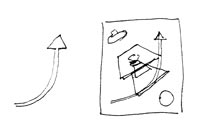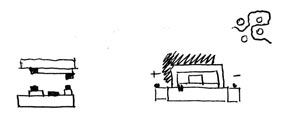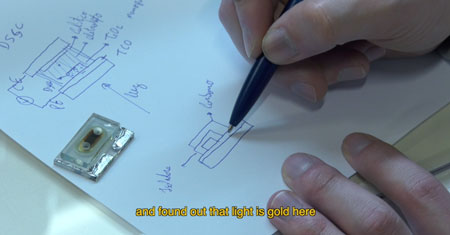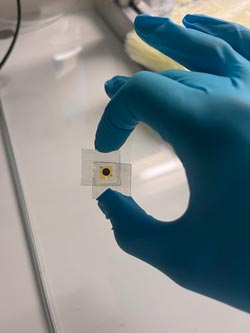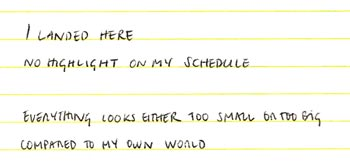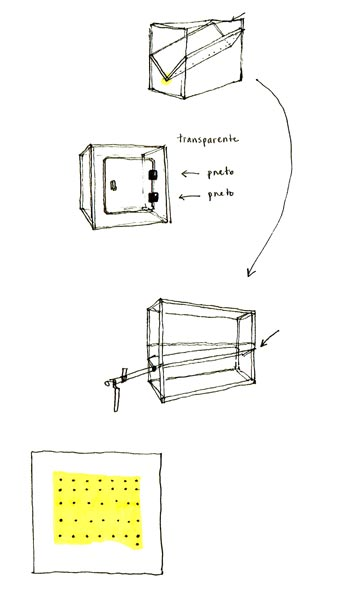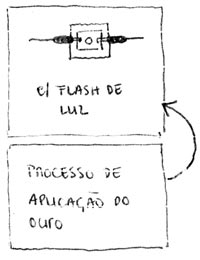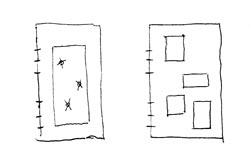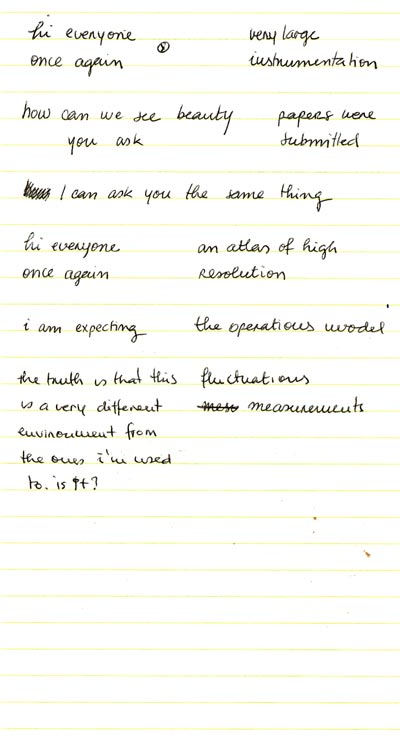An alienated being wakes up in an unknown universe and to survive decides to adapt to the new environment. Waiting for a return trip takes long days and long nights, with only two windows open fighting the white light of the laboratory. In the dark, it reads forgotten notes, equations, and rule catalogues, and wanders among machines it doesn't know how to operate. Not knowing where it is, it pretends.
There's a cloud chasing it — it's this one!
Meanwhile, there's curiosity and love for the small galaxies: overlapping layers of materials that, in the end, result in a single, strangely functional operating block. Meanwhile, all the other beings, participants in active gestures, and the assurance that they don't know they are masters of a beautiful world of imagery, because they live absorbed in a routine of strict ideas and circuits
>
Division and differentiation are steps of organic cell development. By division, cells separate, as in the development of a new life by cell multiplication; by differentiation, a new cell stands out from all the others, with its properties and specificities.
Division and differentiation are stages of cell growth, as they could just as easily be stages of any scientific investigation or artistic practice. By division, it filters and selects; by differentiation, it becomes one, unique. However, here the cells are different, created with different powers, and fed other energies to multiply.
They are another.
>
Deeply inspired by the artist's past experiences working with scientific research spaces and, especially, in the residency program with the "Processes, Products and Energy" Laboratory (LEPABE), "by division and differentiation" is a short film, speculative fiction and a document about everyday life as an outsider.
The concept of stranger, intruder, or error is a constant in the artist's work and it is explored here in continuity with her work “52 Hertz W”, a journal created after getting to know the story of the loneliest whale in the world and correlation with the growing search with alien life and personal difficulties relating and communicating with others.
In this new project, Carolina Grilo Santos directs and writes a fiction around her self-perception as an outsider during her residency at the laboratory, but also in the world in general. However, she also highlights herself as a figure of questioning, reflection, and contemplation. Through an inner monologue, she travels among accounts, wanders, and memories, invoking the divergences and parallelisms between reality and imagination. Here, the process is not the way to reach something, but the body that runs across.
There's beauty in the opacity of others' acts, side by side with the opacity of titanium dioxide. There are twisty borders in the millimeters of tension of what is visible to the naked eye and what can only be seen through the machine, between what can be touched without danger and what’s endangered — in science and art. There's immense beauty in the vulgarity, in the volumes of data, and in the routines of others, but also in how all of this can be understood as phenomena, dances of precise injections, and beams of light. — How can one see beauty? - There's beauty everywhere here.
>
We lost count of the time we’ve spent here.


